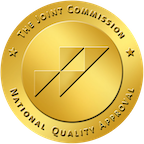Skip To Rehab Listing
With addiction treatment readily available, those struggling with alcohol and drug addiction can get help within their local area.
Substance Abuse Therapy Service Settings and Recovery Methods In Sanger, CA.
The types of recovery facilities in Sanger include the following: short term drug treatment, long term rehab centers, inpatient detoxification centers, inpatient drug and alcohol rehab programs, outpatient counseling.
Individuals looking for rehab can find conveniently located facilities nearby with an array of rehab methods designed for successful rehabilitation. These approaches, which contain both long-established and recently developed methods, can consist of the following: group therapy, couple/family therapy, rational emotive behavioral therapy, 12-step facilitation approach, dialectical behavior therapy, matrix model.
Programs Addressing Special Requirements for Drug and Alcohol Recovery
Dependency can differ based off of circumstances, like the type of drug driving the addiction. Many recovery programs in the Sanger region deliver facilities purposed to tailor treatment to a client's specific needs. These programs contain the following: residential beds for client's children, substance abuse education, persons with post-traumatic stress disorder, persons with serious mental illness, domestic violence, active duty military.
Clients who are unsure what their needs are can reach out to these facilities to obtain patient services that can guide them toward the right program.
Paying For Treatment - Payment & Financing Flexibility
Those struggling with addiction come from varied economic conditions, but a range of payment options makes rehabilitation financially accessible for anybody. Financing opportunities include the following: private medical insurance, private pay, military insurance, sliding fee scale, state education funds, other state funds.
Individuals searching for treatment can get in touch with a treatment program to find out more about what payment alternatives are available to them.
Sanger's drug and alcohol facilities, services, and payment options give those struggling with alcohol and drug addiction an opportunity to start a lasting recovery plan.
Commonly Asked Questions about Addiction and Treatment
How does a person become addicted to drugs and alcohol?
Addiction to drugs and alcohol is a complex process involving a combination of genetic, environmental, psychological, and social factors. While not everyone who uses drugs or alcohol will become addicted, certain factors can increase an individual's vulnerability to addiction. Some key factors contributing to addiction include:
- Genetic predisposition: Genetics play a significant role in addiction, accounting for an estimated 40-60% of an individual's vulnerability. People with a family history of addiction may be more susceptible to developing a substance use disorder.
- Environmental influences: A person's environment can significantly impact their likelihood of developing an addiction. Factors such as exposure to drugs or alcohol, peer pressure, low socioeconomic status, and lack of parental supervision can contribute to substance use and potential addiction.
- Early initiation: Research indicates that individuals who begin using drugs or alcohol at an early age are at a higher risk of developing addiction later in life. Early exposure to substances can disrupt normal brain development, making it more challenging to resist addictive behaviors.
- Psychological factors: Mental health disorders, such as depression, anxiety, or trauma-related disorders, can increase the risk of addiction. Individuals may turn to drugs or alcohol as a coping mechanism for managing emotional distress, which can lead to dependence and addiction.
- Social factors: Social isolation, lack of support networks, or unhealthy relationships can contribute to addiction. Individuals may use drugs or alcohol to fill a void or establish connections with others, increasing their risk of developing a substance use disorder.
- Chronic use: Repeated exposure to drugs or alcohol can lead to physiological changes in the brain's reward and pleasure centers. Over time, these changes can result in the development of tolerance, dependence, and ultimately addiction.
- Route of administration: The method by which a substance is consumed can impact the likelihood of addiction. Faster-acting routes of administration, such as injecting, smoking, or snorting, can lead to a more rapid onset of pleasurable effects, increasing the risk of addiction.
How do addictive drugs influence behavior?
Addictive drugs influence behavior by interacting with the brain's reward system. This system is responsible for driving pleasurable feelings and motivating behaviors essential to human survival, such as eating and socializing. Addictive substances can hijack this system, leading to changes in behavior and brain function.
Here's a simplified explanation of how this works:
Alteration of Neurotransmitter Activity: Addictive substances often increase the levels of certain neurotransmitters, chemicals that transmit signals between nerve cells in the brain. One key neurotransmitter affected by many drugs is dopamine, which is closely associated with feelings of pleasure and reward.
Overstimulation of the Reward System: By increasing dopamine levels, addictive drugs overstimulate the reward system, often creating a sense of euphoria. This intense pleasure can lead individuals to repeat the drug use to recapture this feeling.
Development of Tolerance and Dependence: Over time, the brain adapts to the increased dopamine levels by producing less dopamine or reducing the number of receptors that can receive signals. As a result, the drug's effects are lessened, a phenomenon known as tolerance. This can lead users to take increasingly larger doses of the drug to achieve the same dopamine high. This cycle can lead to dependence, where the brain relies on the drug to function normally.
Withdrawal and Cravings: When the drug is not taken, withdrawal symptoms can occur as the brain attempts to rebalance itself. These can include negative emotions like anxiety and depression, physical symptoms like nausea or restlessness, and intense cravings for the drug.
Compulsive Drug-seeking Behavior: As the cycle of tolerance, dependence, withdrawal, and cravings continues, individuals may engage in compulsive drug-seeking behavior, even when faced with negative health, social, or legal consequences. This is a key characteristic of addiction.
Impairment in Decision-making and Self-control: Long-term drug use can also cause changes to other areas of the brain that impair decision-making, self-control, judgment, learning, and memory, further fueling the cycle of addiction.
What are the signs of addiction?
Physical symptoms: Changes in appearance, such as weight loss or gain, poor hygiene, bloodshot eyes, or constricted pupils, can be indicative of addiction. Additionally, the person may display signs of intoxication or withdrawal, such as tremors, sweating, or flu-like symptoms.
Behavioral changes: Addiction can lead to significant shifts in behavior, such as increased secrecy, social isolation, or sudden mood swings. The person may neglect responsibilities, withdraw from activities they once enjoyed, or display uncharacteristic aggression or irritability.
Loss of control: A hallmark of addiction is the inability to control substance use or engagement in harmful behaviors, even when the person expresses a desire to stop. This can lead to increased frequency or intensity of use, as well as unsuccessful attempts to quit or cut down.
Preoccupation: The person may become preoccupied with obtaining, using, or recovering from the effects of the substance or behavior, often at the expense of other aspects of their life.
Risk-taking: Addiction can lead to increased risk-taking behaviors, such as using substances in dangerous situations, driving under the influence, or engaging in risky sexual activities.
Neglecting relationships: Addiction can strain personal relationships, as the person may prioritize their substance use or behavior over their connections with friends and family.
Changes in sleep patterns and energy levels: Addiction can cause disruptions in sleep patterns, leading to insomnia or excessive sleepiness. The person may also experience fluctuations in energy levels, such as periods of hyperactivity followed by lethargy.
Tolerance and withdrawal: Over time, individuals with addiction may develop a tolerance to the substance or behavior, requiring higher doses or more frequent engagement to achieve the desired effect. If the person stops using the substance or engaging in the behavior, they may experience withdrawal symptoms, such as anxiety, irritability, insomnia, or physical discomfort.
Continued use despite negative consequences: A key sign of addiction is the persistence of substance use or engagement in harmful behaviors despite experiencing negative consequences, such as health issues, relationship problems, financial difficulties, or legal troubles.
Neglect of responsibilities: Addiction can cause a person to neglect personal, professional, or family obligations, resulting in job loss, financial difficulties, or relationship problems.













